
The word “hoarding” probably evokes a particular image, made more common by shows like Hoarders that highlight extreme examples. In reality, not all hoarders have rooms full of items piled high to the ceiling.
The Institute for Challenging Disorganization (now, there’s a relatable title!) has classified hoarding behavior into five levels on their Clutter-Hoarding Scale.Level 1 Hoarding
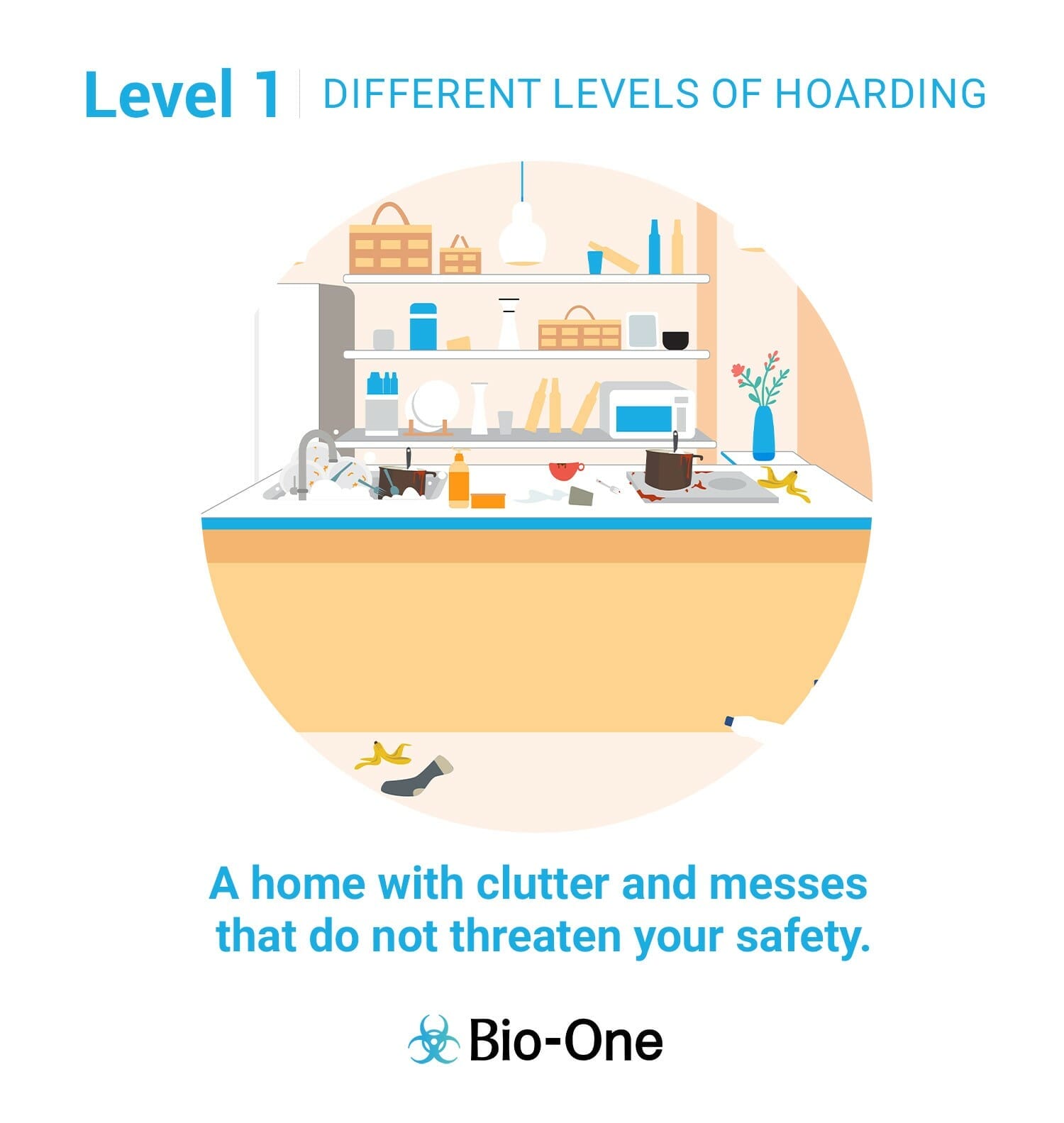
At Level 1, a home is not pristine, but the space is still easily accessible and sanitary. There is clutter, but no concern for safety. Most, if not all of us, have been in Level 1. Many people spend most of their time in this stage.
Here are the defining characteristics of this level:
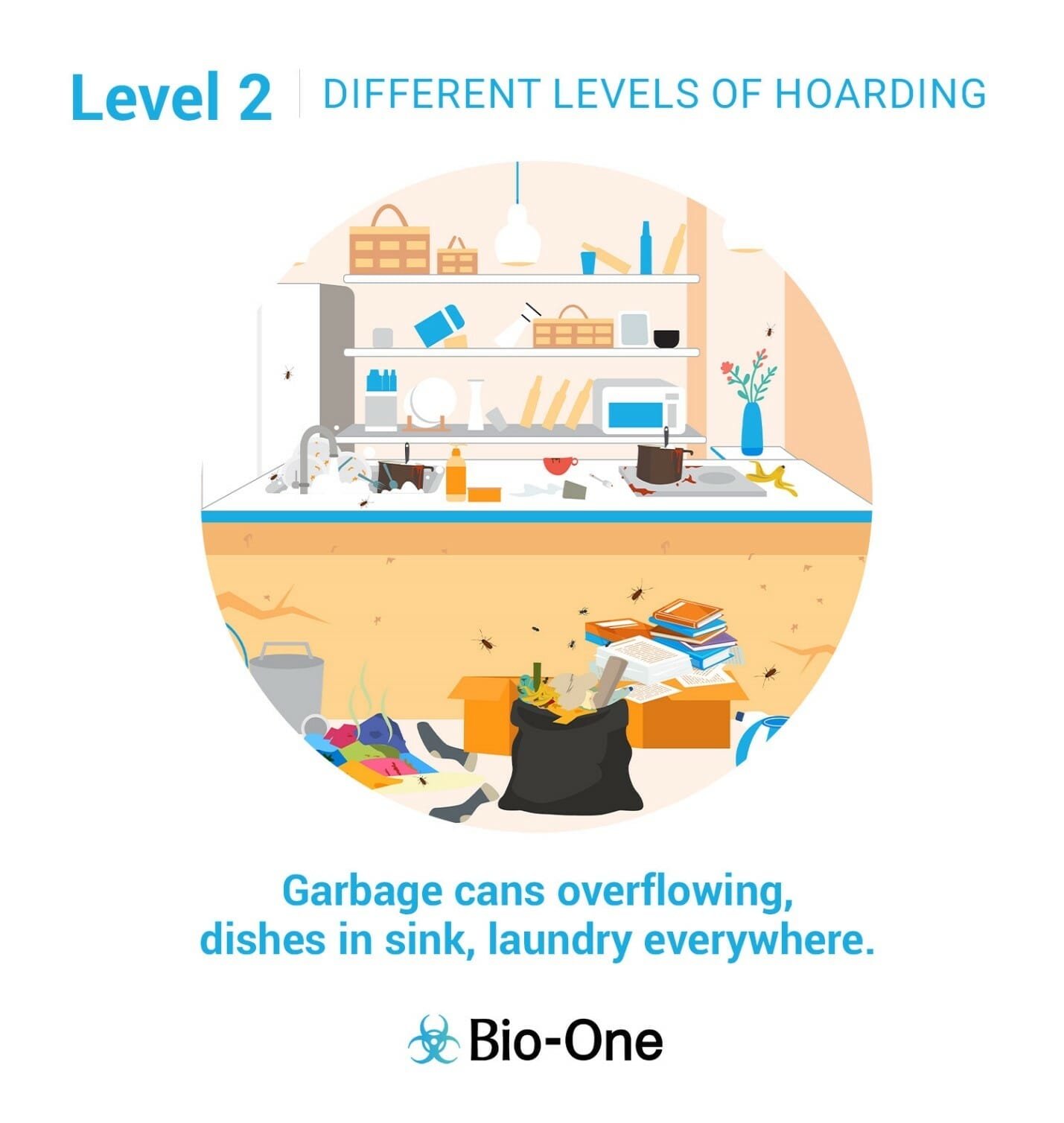
At Level 2, the home is still very livable, but there’s more evidence of disarray. The home is in need of cleaning and may be starting to overwhelm the residents. The hygiene level isn’t optimal.
Most of us bounce between Level 1 and Level 2. However, here are the more defining characteristics of Level 2:
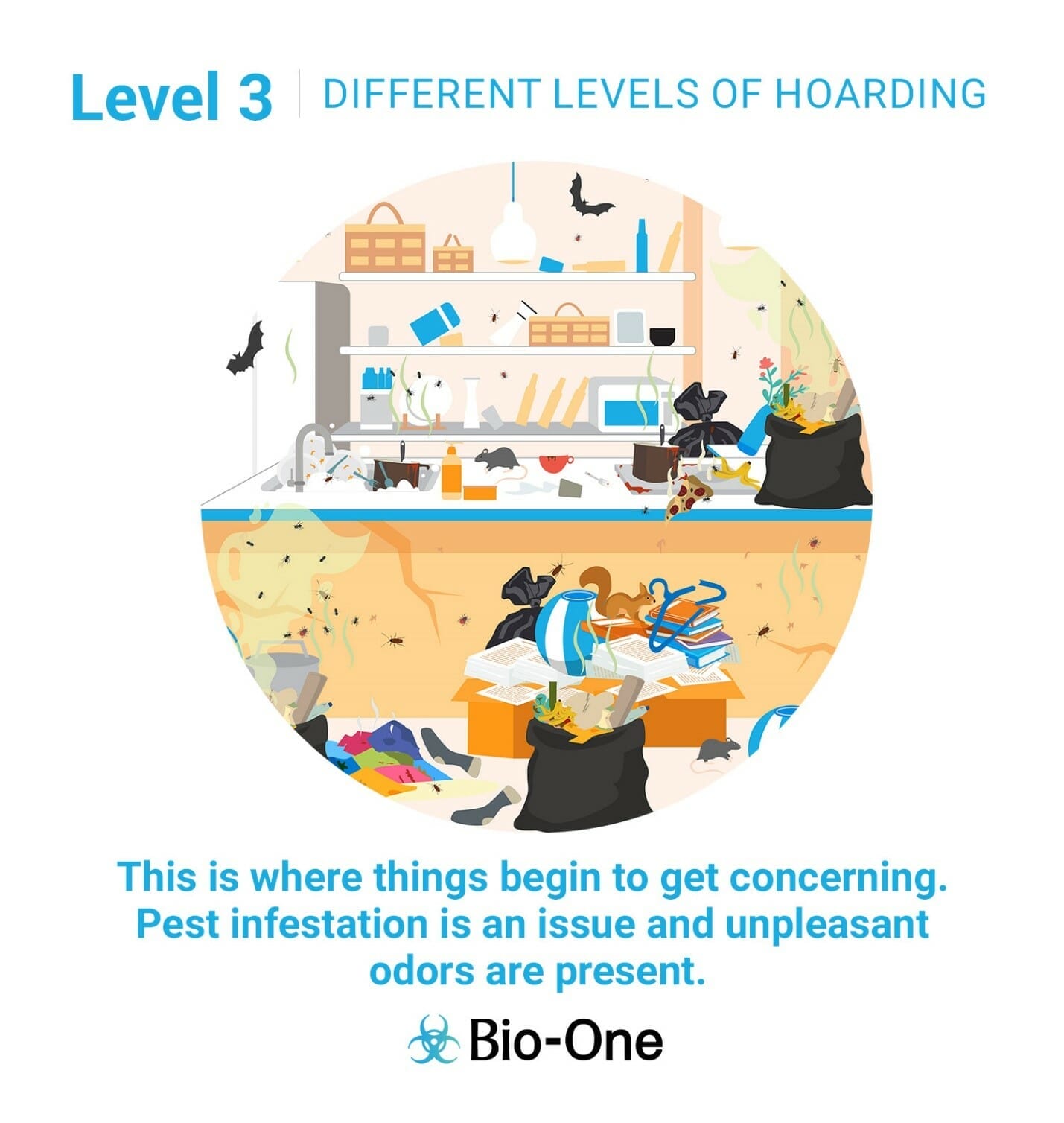
Level 3 is considered the turning point between manageable household disorganization and a more serious issue. Level 3 homes show extreme disorganization and indicate hoarding behavior.
Here are the defining characteristics of this level:
Level 3 households should consider hiring outside help. Although, it’s still possible to get it under control with a concerted effort from the whole family
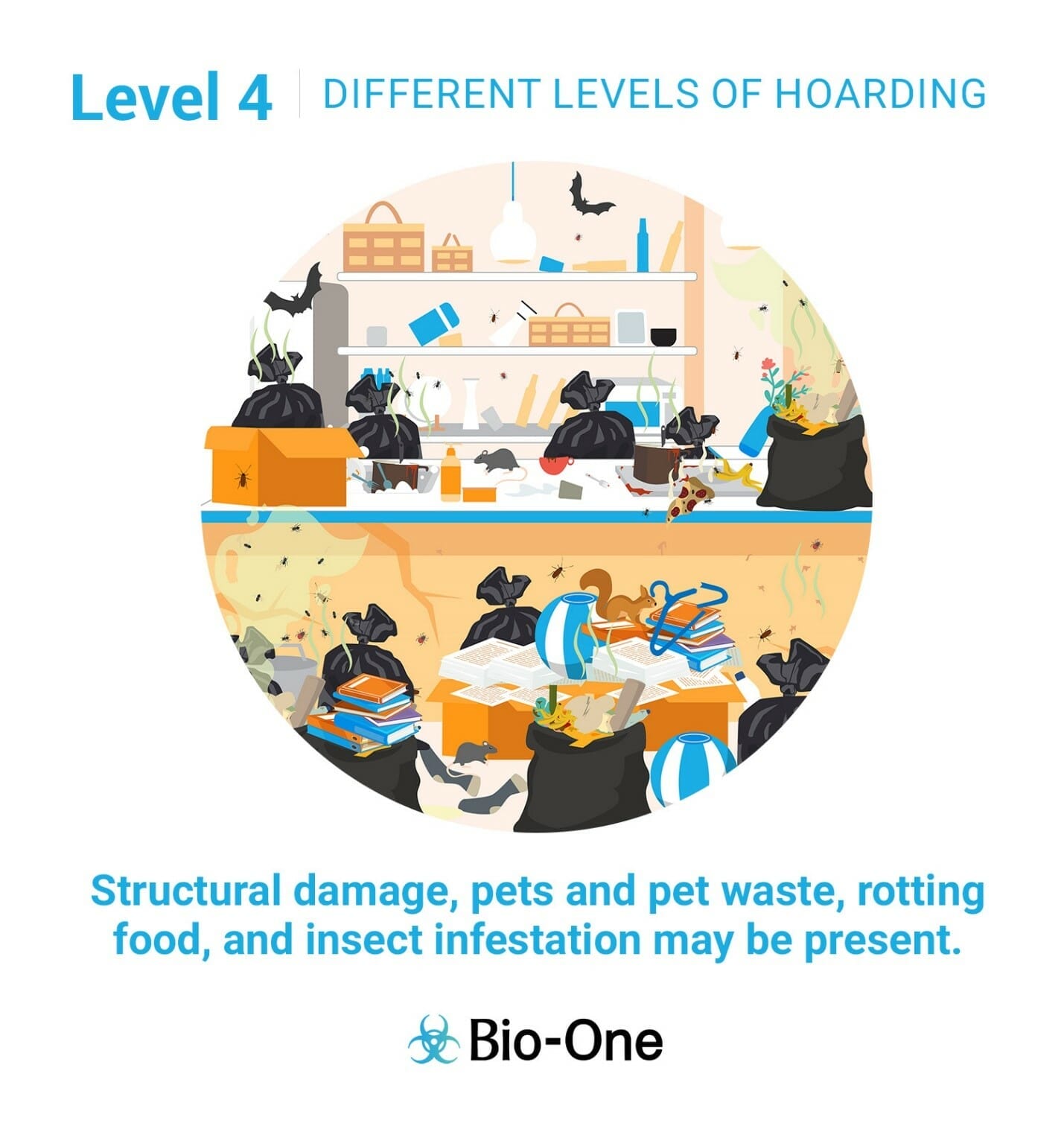
At Level 4, the home shows excessive clutter.Those living in Level 4 conditions need professional help. At this level, part of getting help includes professional cleaning to transform the house into a safe, hygienic space where people can thrive. Mental health counselors and social workers may also step in to help residents change their habits.
Here are the defining characteristics of this level:
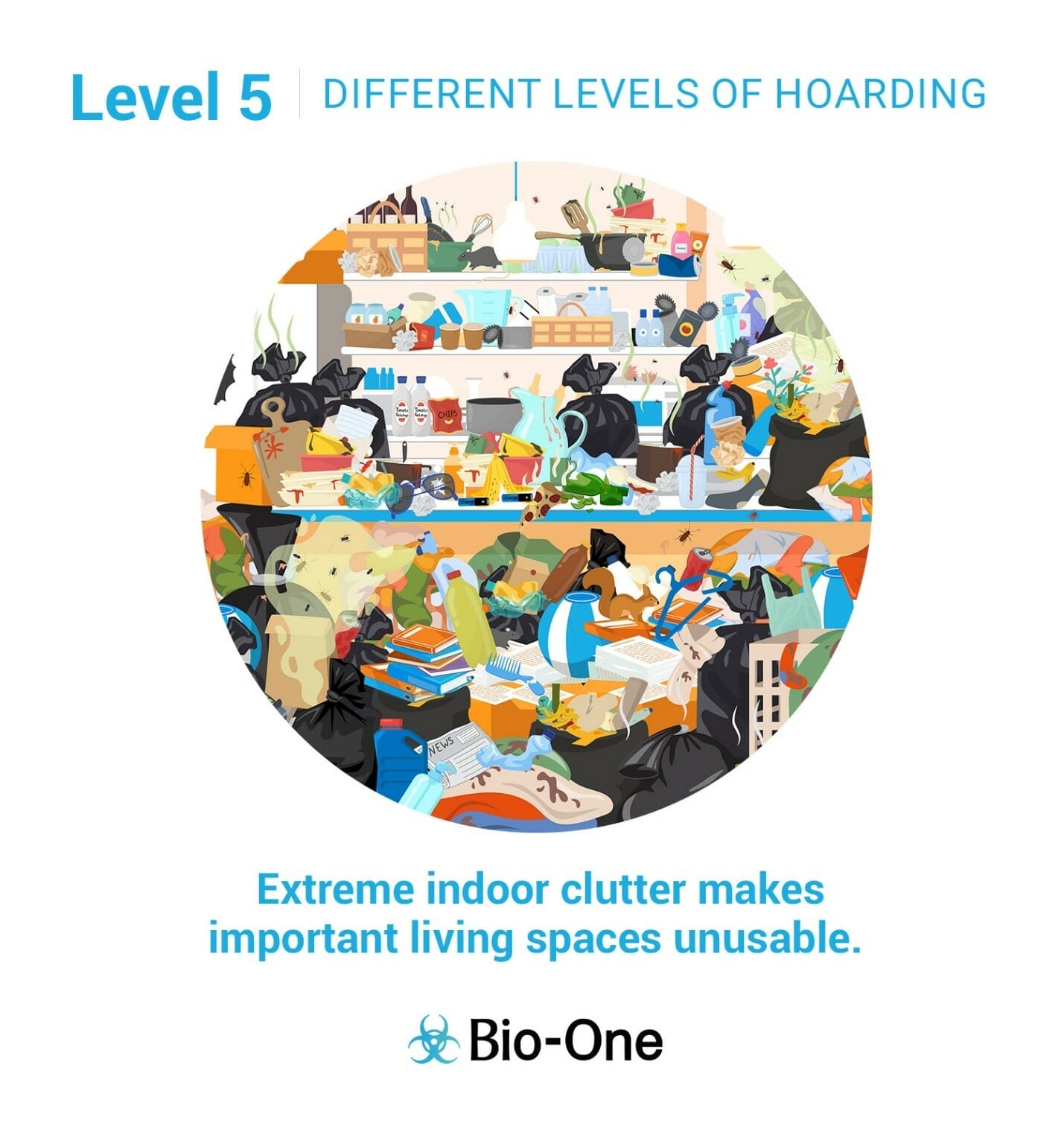
Level 5 is the highest level of hoarding behavior. Level 5 homes are alarmingly hazardous.
They require professionals with safety equipment and training to clean.
Here are the defining characteristics of this level:
If you or someone you know is struggling with these levels of hoarding we are here to help.
You can find more information at https://biooneorange.com/ or contact us at (714) 397-8375

Our certified technicians at Bio-One of Orange understand that every hoarding situation is unique, which is why our approach is always founded on trying to help individuals struggling with hoarding disorder get the help they need. Helping someone struggling with a hoarding disorder may be easier said than done, and the reason is simple: most people don’t know what to do to help.
A person struggling with hoarding disorder needs more help than cleaning and being stripped away from their possessions (that is what they feel if the approach is improper). Hoarding is a mental health disorder that affects up to 5% of the world’s population. People with hoarding disorder experience difficulty throwing or giving away their possessions, no matter how “useless” these things may seem to others.
Old magazines, newspapers, books, clothing, shoes, food… the list goes on and on. The things one may consider to be trash or recycling material have a completely different meaning for someone struggling with hoarding. There is usually an emotional attachment to these possessions that must be treated for hoarders to detach from them.
At the same time, we take care of the possible hazardous situations that have resulted from the clutter and hoarding lifestyle. At the end of the day, cluttered spaces are dangerous for humans and animals, as there are risks of falls, fire, disease, and infections.
If you’re looking to help a friend, a family member, or someone from your community who may be struggling with hoarding disorder, here are five things you should know:
Hoarding scenarios may be complicated. It’s normal for people struggling with hoarding disorder to isolate themselves from others and not admit that they need help (unless the situation becomes so dangerous that they must be removed from the property).
People struggling with hoarding disorder may deal with other mental health conditions like anxiety, schizophrenia, and depression. It’s still very hard to determine why people develop hoarding disorder, but a history of mental health conditions in the family and a traumatic life event may have triggered this condition in the individual.
People often mistake collecting for hoarding disorder. The main differentiator between these two lies in how the individual looks at their possessions. A collector is usually proud to show off his/her collections, as it is possible it may have taken time and effort to put everything together. On the other hand, Hoarders usually feel ashamed of their living conditions, as it’s impossible to carry out normal activities like cleaning, cooking, and walking around the house.
If you want to help an individual struggling with hoarding disorder, it is best to turn to a mental health professional for a planned intervention.
Fortunately, with the right treatment, hoarding has a positive outlook. Once they understand the reasons behind hoarding and have a better relationship with their possessions, you can offer to help them clean their environment.
For any hoarding situation, Bio-One of Orange can help
Cleaning and disinfecting a hoarded property may be challenging and overwhelming. Bio-One of Orange is always available to help. Our certified technicians have first-hand experience remediating a hoarding situation with care, compassion, and discretion for victims and families.
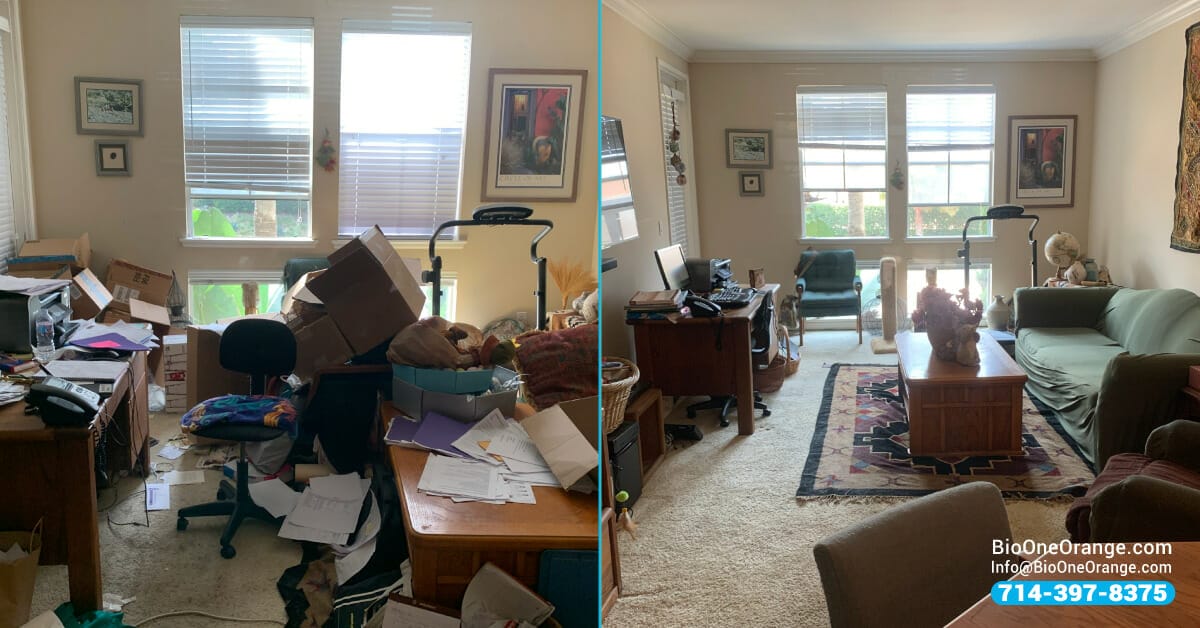
Bio-One of Orange offers a quick solution to life’s most difficult and unexpected situations. Locally owned, we provide top-quality, industry-leading cleaning, sanitation, and decontamination services in:
Locally owned, Bio-One of Orange is proud to serve Orange County and surrounding Southern California areas: Aliso Viejo, Anaheim, Brea, Buena Park, Costa Mesa, Cypress, Dana Point, Fountain Valley, Fullerton, Garden Grove, Huntington Beach, Irvine, La Habra, La Palma, Laguna Beach, Laguna Hills, Laguna Niguel, Laguna Woods, Lake Forest, Los Alamitos, Mission Viejo, Newport Beach, Orange, Placentia, Rancho Santa Margarita, San Clemente, San Juan Capistrano, Santa Ana, Seal Beach, Stanton, Tustin, Villa Park, Westminster, and Yorba Linda!
Our professional technicians are ready to approach any hoarding situation with care, compassion, and discretion. Bio-One of Orange, a proud member of the Orange Chamber of Commerce, is available 24/7, 365 days a year. Contact us at 714-397-8375.